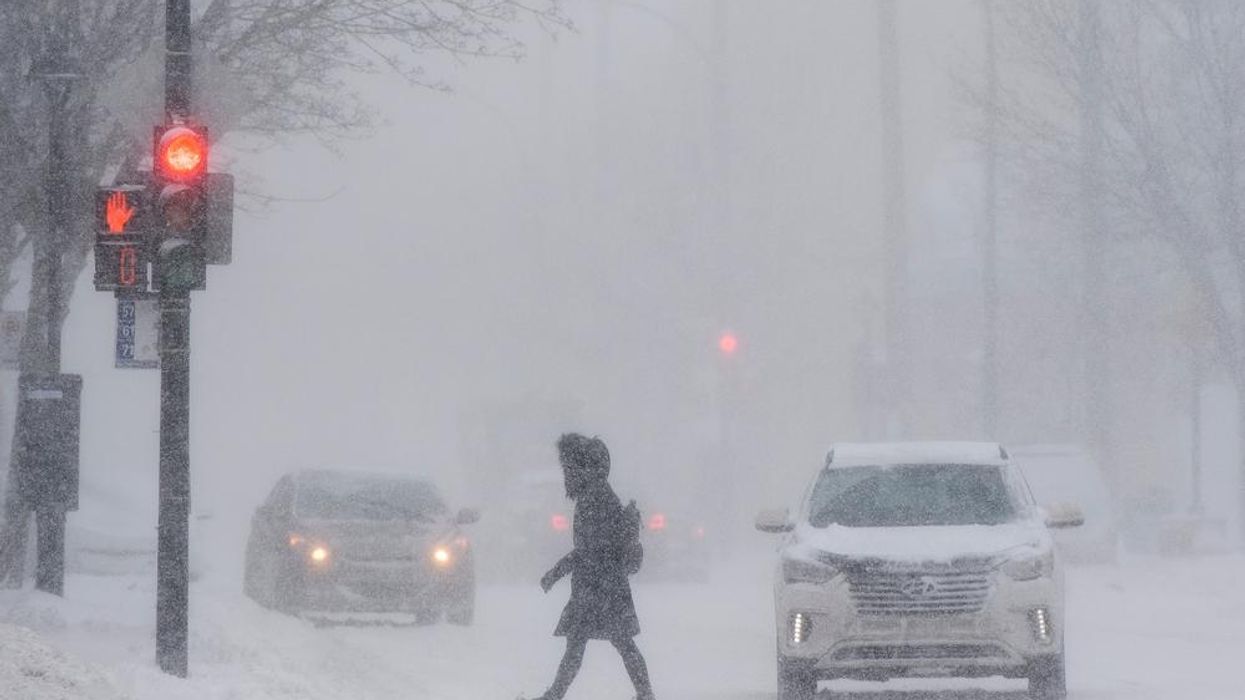Evidence proves global warming's impact on hurricanes and heat waves, but the link between human emissions and heavy snow is not yet definite. Though data shows that winters are unquestionably getting warmer, as a recent report by Climate Central shows that since 1970, winter temperatures have increased by 3.3°F across 238 U.S. locations.
This has led to snowfall decreasing in areas with mild climates, making lighter storms and small flurries a thing of the past. As for colder climates, snowfall is likely to increase in the coming years, exacerbating winter storms and precipitation.
Kevin Trenberth of the National Center for Atmospheric Research told Salon that while people may think increasing temperatures would lead to less snowfall, they can actually cause heavier winter storms.
"Winter storms develop in a climate change environment: it is warmer and moister," he said. "But it is plenty cold in winter over the continent. It means snow amounts can be much greater: e.g. see Buffalo recently. They may be more intense: not guaranteed, but more developments ensue. Watch for a bad nor-easter."
Trenberth explained that the same conditions that can exacerbate storms in New York can also lead to devastating winters in places like Oklahoma or Texas, which last year experienced blackouts for weeks as their power grids were not built to handle ice and low temperatures.
Trenberth added: "[People need] education that winter warming may mean more snow, not less."
Since the start of the industrial revolution, global temperatures have risen by 1.1 degrees Celsius. As the UK Met Office told euronews, "White Christmases were more frequent in the 18th and 19th centuries."
“Climate change has brought higher average temperatures over land and sea and this generally reduces the chances of a white Christmas," they added.
Unless countries drastically decrease emissions, the world is likely to see a 3 degree Celsius increase by 2030. The Paris Climate Agreement previously set a goal for countries to not go beyond a 1.5 degree Celsius threshold, which the world is almost unanimously failing to meet.
Alexandra Contosta, a research assistant professor at the University of New Hampshire, told The Providence Journal that curtailing global emissions is key to preserving snow in areas seeing less of it, and preventing it in the areas that see too much.
"The future winter will probably be warmer and we will likely have less snow than we do now," she said. "If we reduce our emissions, we can protect some of our winter and maintain those cold temperatures and snow cover."
- 'The Brady Bunch' Reunites In New Lifetime Film 'Blending Christmas' ›
- People of Color Are Less Likely to Receive Paxlovid and Other Covid-19 Treatments ›
- Danny Pintauro on Chosen Family & New RomCom A Country Christmas Harmony ›
- How Women of Color Are Bearing the Brunt of Climate Change ›
- 'Once in a Generation' Winter Storm Will Impact Nearly Every State - Advocate Channel ›
- Winter Storm Blasts US, Disrupts Holiday Travel - Advocate Channel ›
- Harsh Winter Storm Puts Migrants at Risk - Advocate Channel ›
- How Climate Change Leaves Women at Risk of Domestic Violence - Advocate Channel ›
- Christmas Tradition in Spain Slammed for Blackface - Advocate Channel ›
- The Best Christmas Markets of 2022 ›



















































